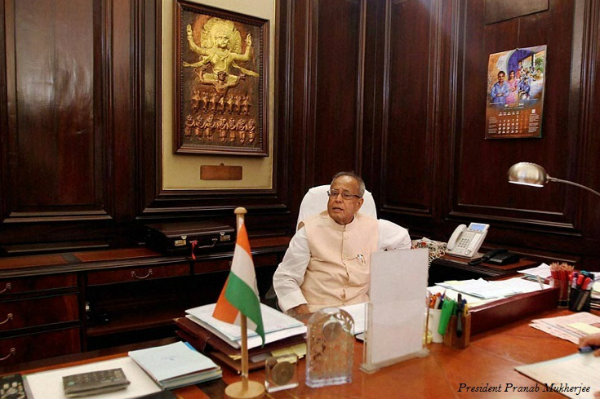Article 74 (1) of the Indian Constitution states that “there shall be a Council of Ministers with the Prime Minister at the head to aid and advise the President who shall in the exercise of his functions, act in accordance with such advice.”
The President has a wide range of power including executive, legislative, judicial, and emergency powers. However, in a parliamentary system (e.g. India), these powers are in reality used by the President only on the advice of the Council of Ministers.
The Prime Minister and the Council of Ministers have support of the majority in the Lok Sabha and they are the real executive.
The President is the formal head of the government.
The Prime Minister is obliged to furnish all the information that the President may call for.
The Council of Ministers is headed by the Prime Minister.
In the parliamentary form of executive, it is essential that the Prime Minister has the support of the majority in the Lok Sabha. And the moment the Prime Minister loses this support of the majority; he or she loses the office.
In case no party is in majority, a few parties can form government ‘in coalition.’
A Prime Minister has to be a Member of Parliament (MP); however, if someone becomes the Prime Minister without being an MP; in such as case, he or she has to get elected to the Parliament within six months of period.
The Council of Ministers constitutes not more than 15 percent of a total number of members of the House of the People (91st Amendment).
Persons selected by the Union Public Service Commission for Indian Administrative Service (IAS) and Indian Police Service (IPS) constitute the backbone of the higher level bureaucracy in the States.
Though IAS and IPS work under the state government, they are appointed by the central government; hence, only the central government can take disciplinary action against them. However, the officers appointed through the State Public Service Commission look after the state administration.
All the political institutions in India, function in the name of the President of India and the President supervises their functions to bring harmony in their works to achieve the objectives of the State.
In India, the President is elected, not appointed, (although not elected directly by the people). The President is elected by the Members of Parliament (MPs) and the Members of the Legislative Assemblies (MLAs) of each state.
Participation of Members of the state’s Legislative Assemblies in the election of the president of India shows that the President of India represents the entire nation. At the same time, the indirect election of the President ensures that he cannot claim popular mandate like that of the Prime Minister and thus remains only a nominal head of the State.
All major policy decisions and orders of the government are issued in the President’s name.
The President appoints all the major heads of the institutions of the government, i.e.,
The appointment of the Chief Justice of India,
The Judges of the Supreme Court and the High Courts of the states,
The Governors of the states,
The Election Commissioners,
Ambassadors to other countries, etc.
The government of India makes all international treaties and agreements in the name of the President.
The President is the supreme commander of the defense forces of India.
However, all these powers are exercised by the President only on the advice of the Council of Ministers headed by the Prime Minister.
The President can ask the Council of Ministers for reconsideration on any advice (asked to him by the Council of Ministers), but if the Council of Ministers recommend the same advice again, he is bound to act according to it.
A Bill passed by the Parliament becomes a law only after the President gives assent to it. The President can return a Bill back to the Parliament for reconsideration, but he has to sign it, if the Parliament passes the Bill again (with or without amendment).


No comments:
Post a Comment